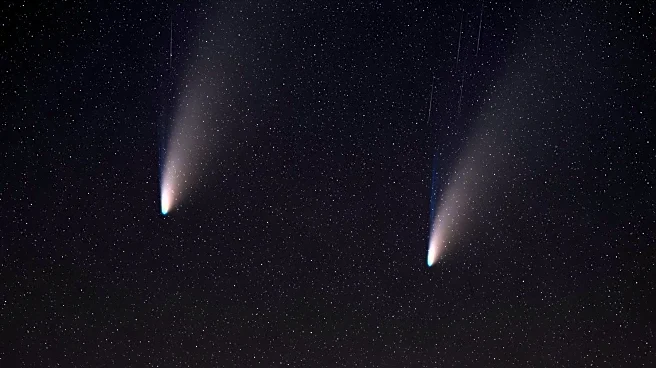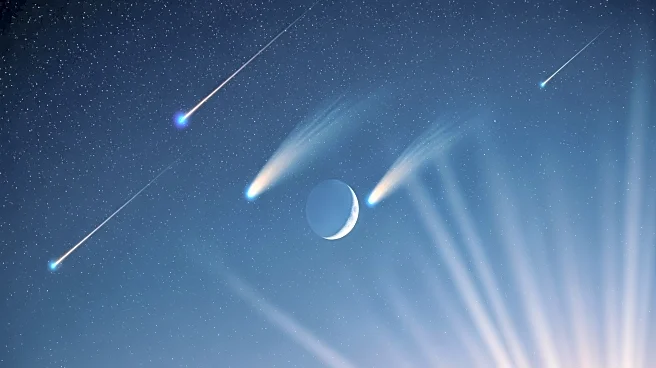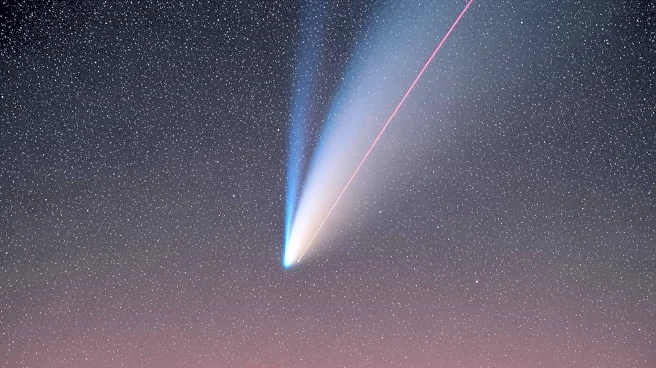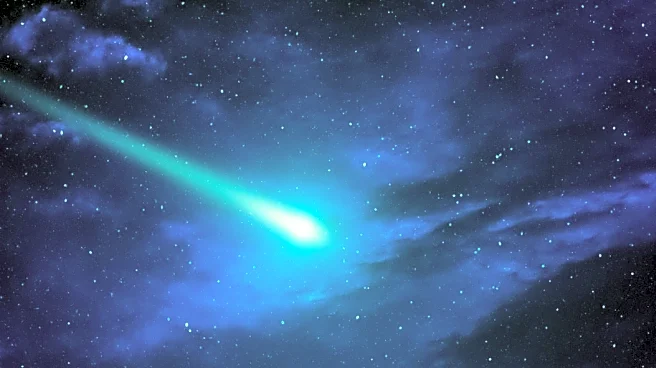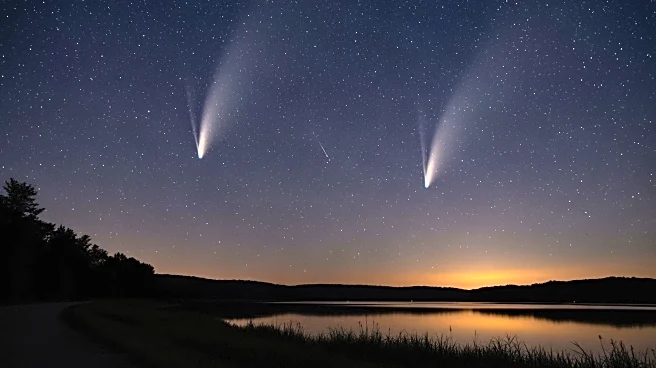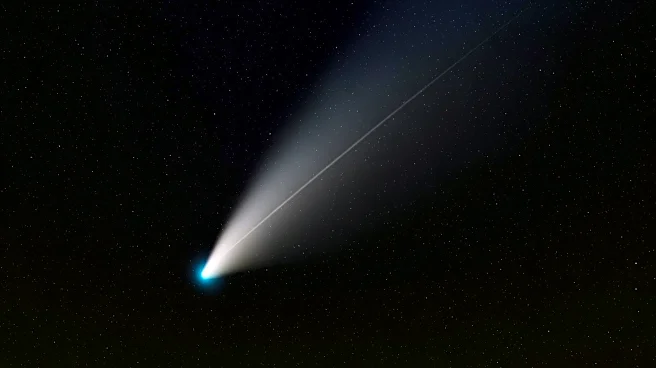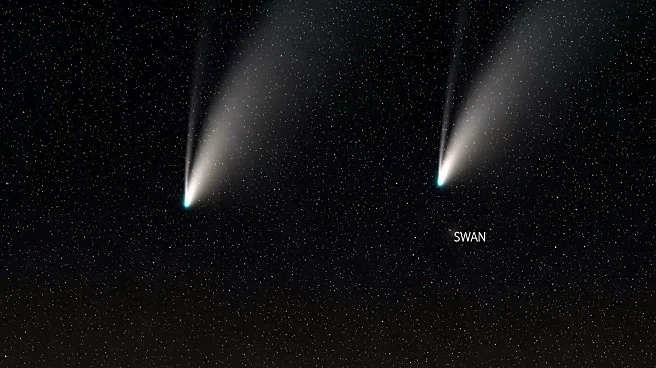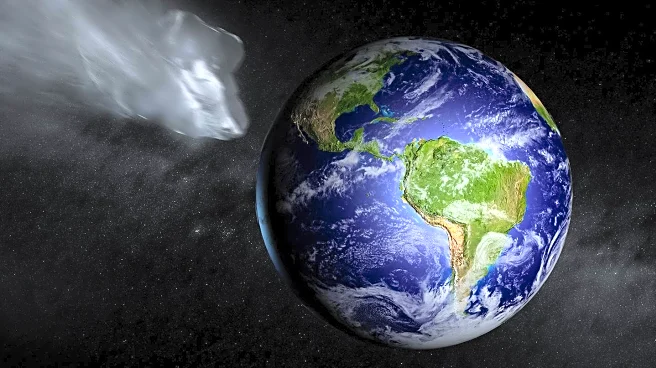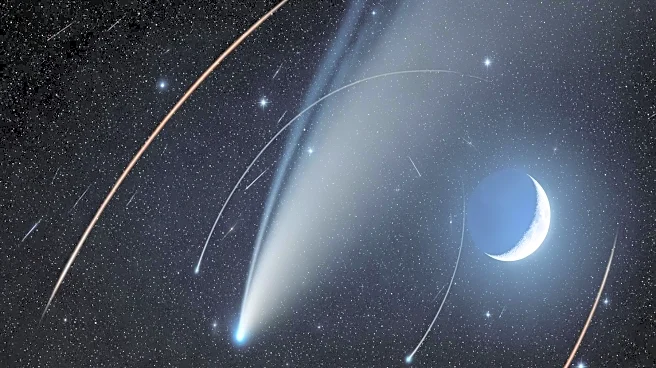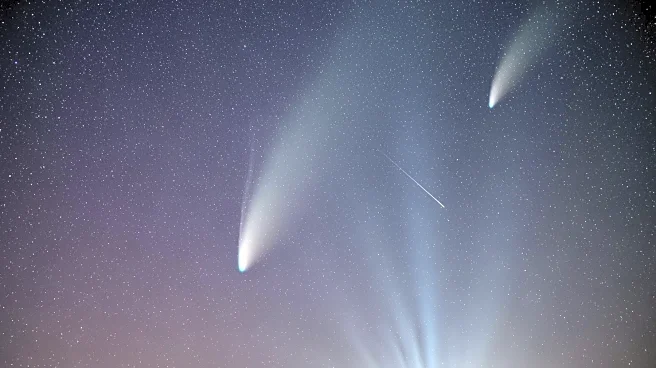What's Happening?
Comet Lemmon, designated C/2025 A6, and Comet SWAN, designated C/2025 R2, are visible in the night sky, providing a rare opportunity for skywatchers. Comet Lemmon, a green comet, is passing by Earth for the first
time in over 1,300 years, reaching its closest approach at 56 million miles away on October 21, 2025. It is visible to the naked eye under very dark skies, with a magnitude of 4.5. Comet SWAN, which reached its closest approach earlier this week at 24 million miles away, is slightly dimmer with a magnitude of 5.9, requiring binoculars or a telescope for viewing. The weather conditions in Delaware and southeastern Pennsylvania are favorable for comet watching, with clear skies expected.
Why It's Important?
The visibility of Comet Lemmon and Comet SWAN presents a unique opportunity for astronomers and enthusiasts to observe these celestial phenomena. Such events can enhance public interest in astronomy and provide educational opportunities about cometary science and the solar system. The appearance of these comets also contributes to scientific research, offering insights into the composition and behavior of comets as they interact with solar winds and other cosmic forces. Observing these comets can inspire future generations to engage with space exploration and scientific inquiry.
What's Next?
Comet Lemmon is expected to brighten further around Halloween and into early November, offering more opportunities for observation. Skywatchers are encouraged to use binoculars or telescopes to enhance their viewing experience, especially in areas with minimal light pollution. Comet SWAN, while more challenging to spot, remains visible in the southern hemisphere. As these comets continue their journey, astronomers will monitor their paths and any changes in brightness or trajectory, contributing to ongoing cometary studies.
Beyond the Headlines
The appearance of Comet Lemmon and Comet SWAN highlights the importance of preserving dark skies for astronomical observations. Light pollution remains a significant barrier to viewing celestial events, emphasizing the need for initiatives that protect night skies. Additionally, the study of comets can provide clues about the early solar system and the origins of water and organic compounds on Earth, offering broader implications for understanding planetary formation and the potential for life elsewhere in the universe.
